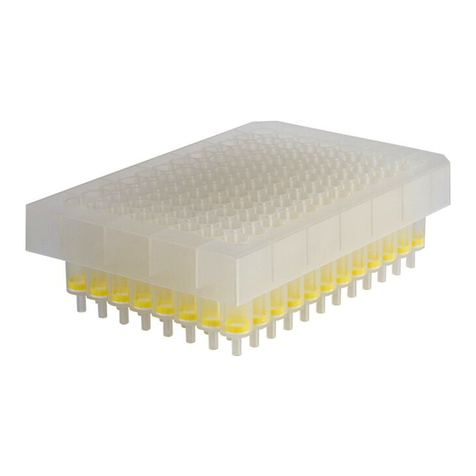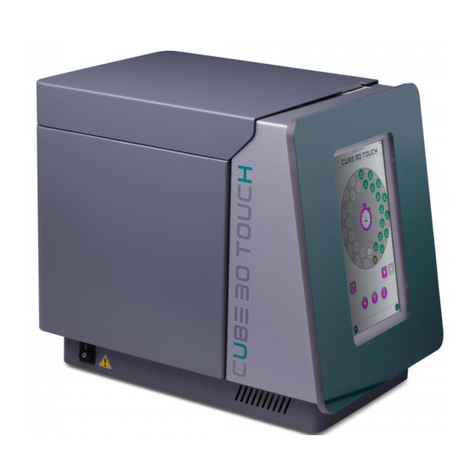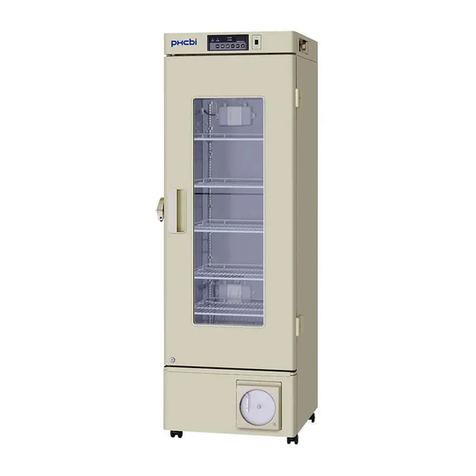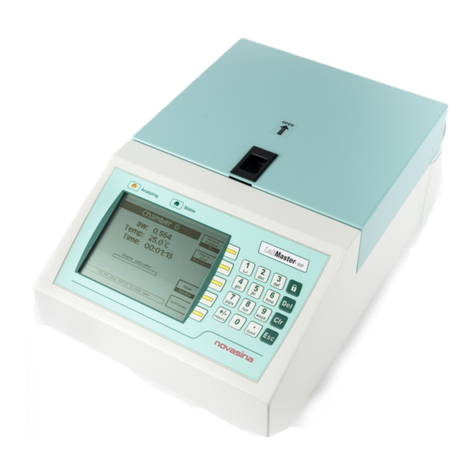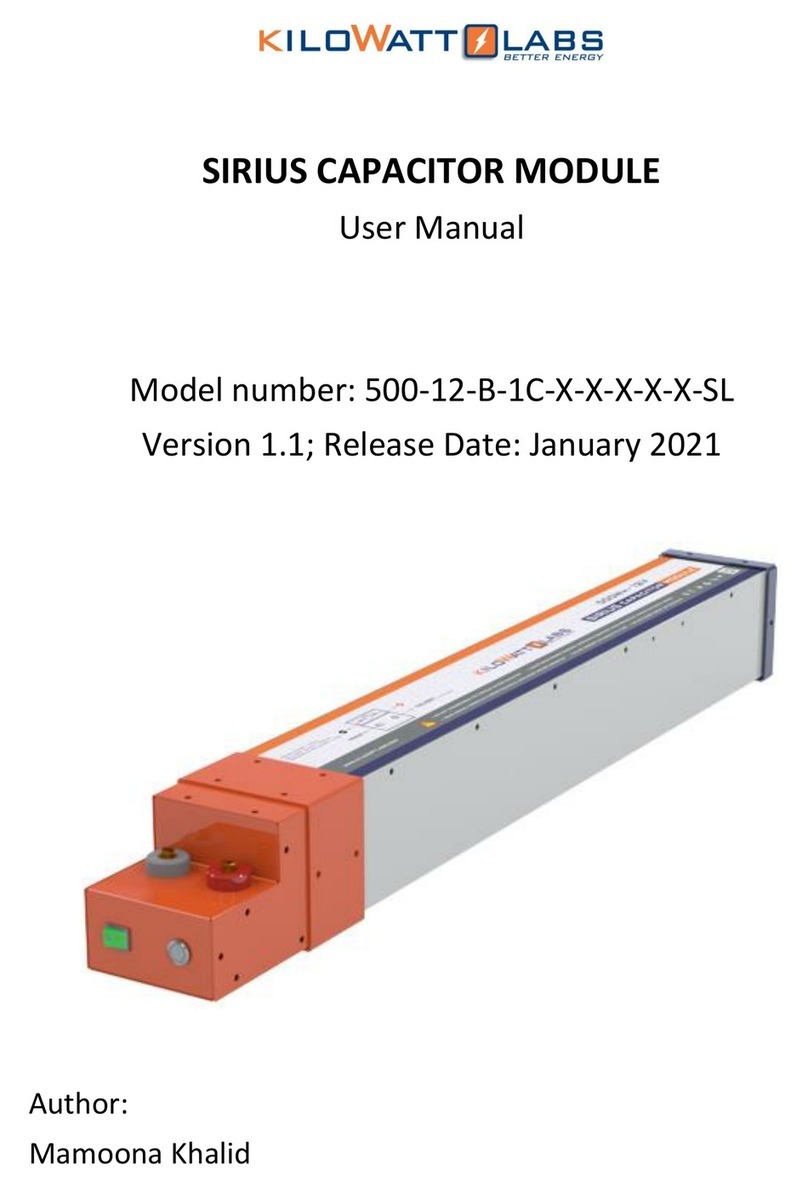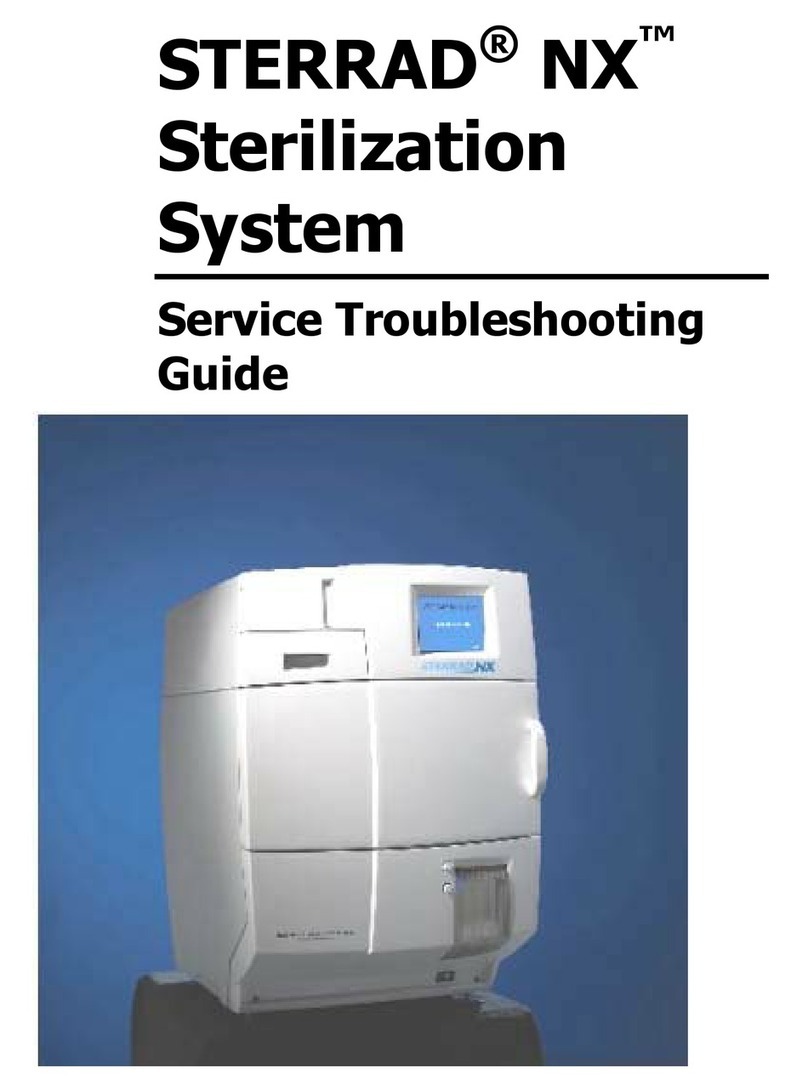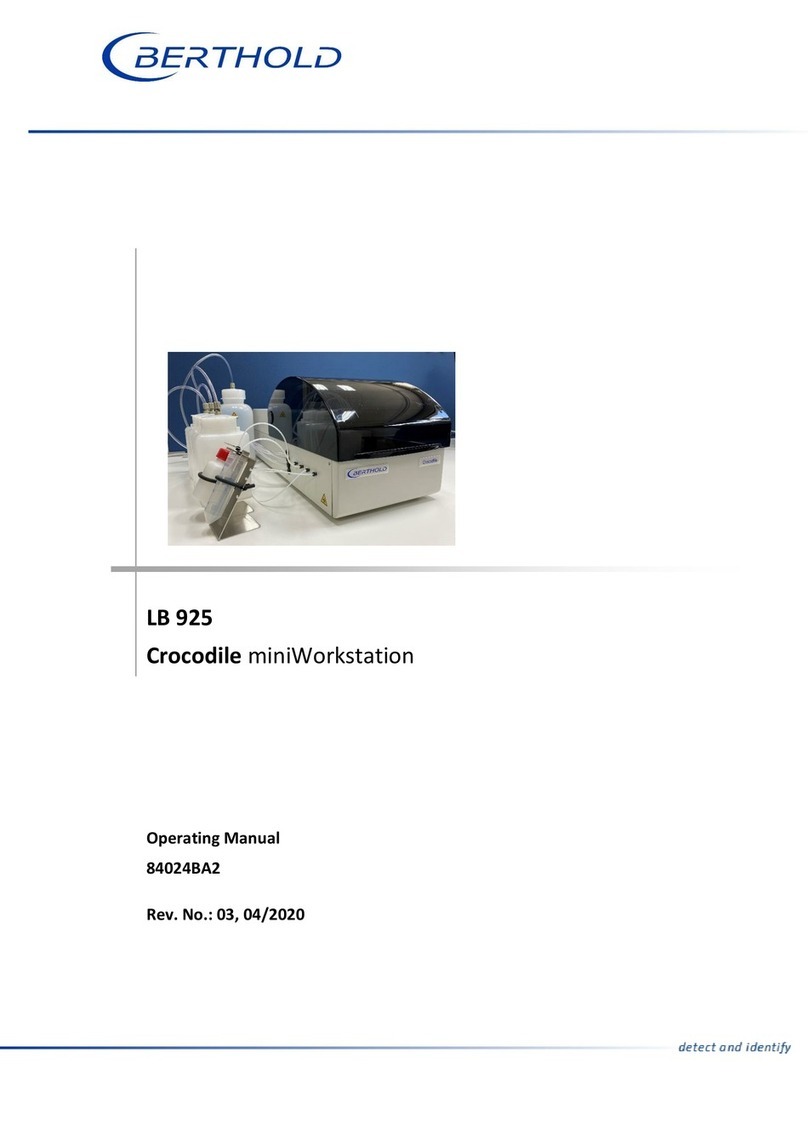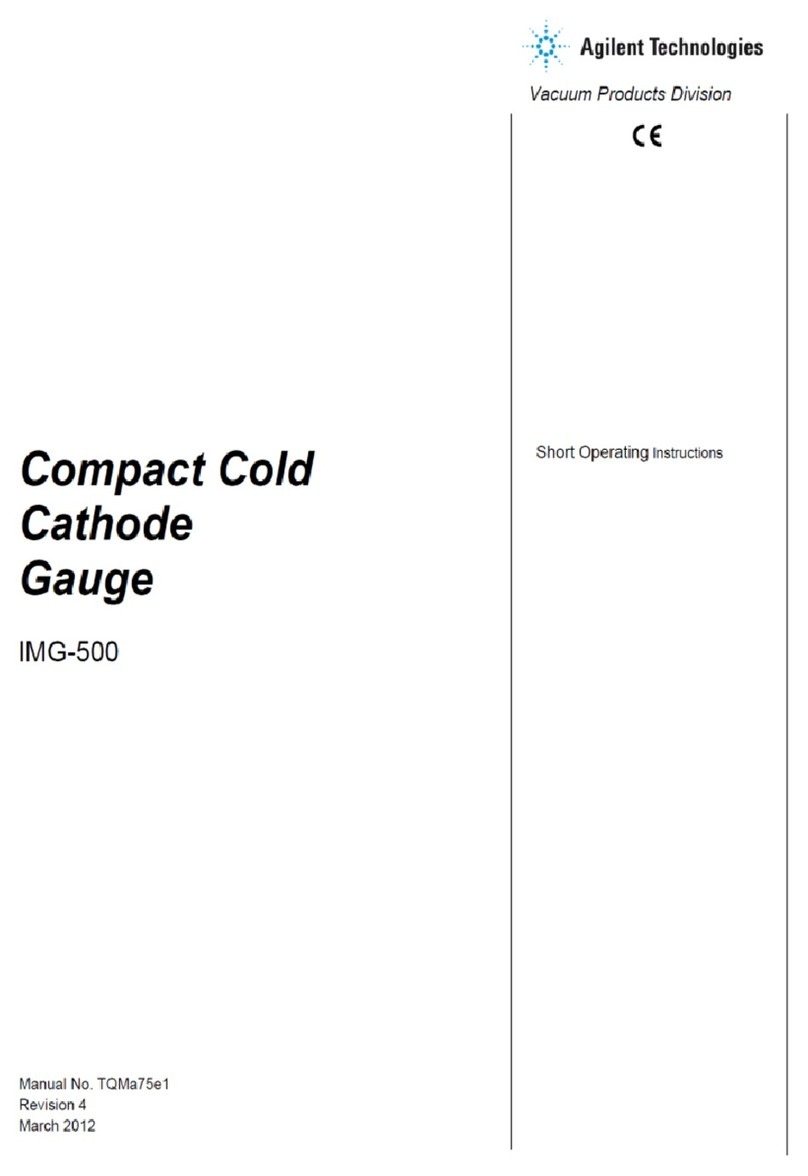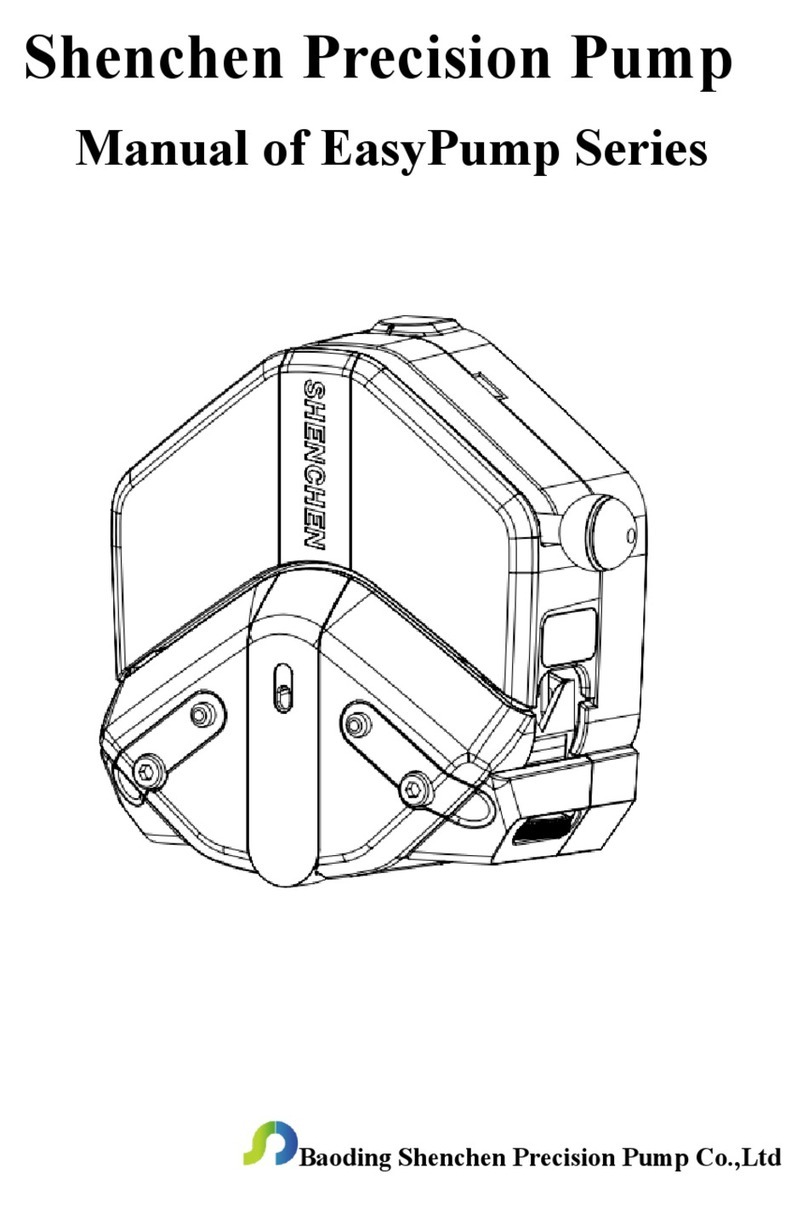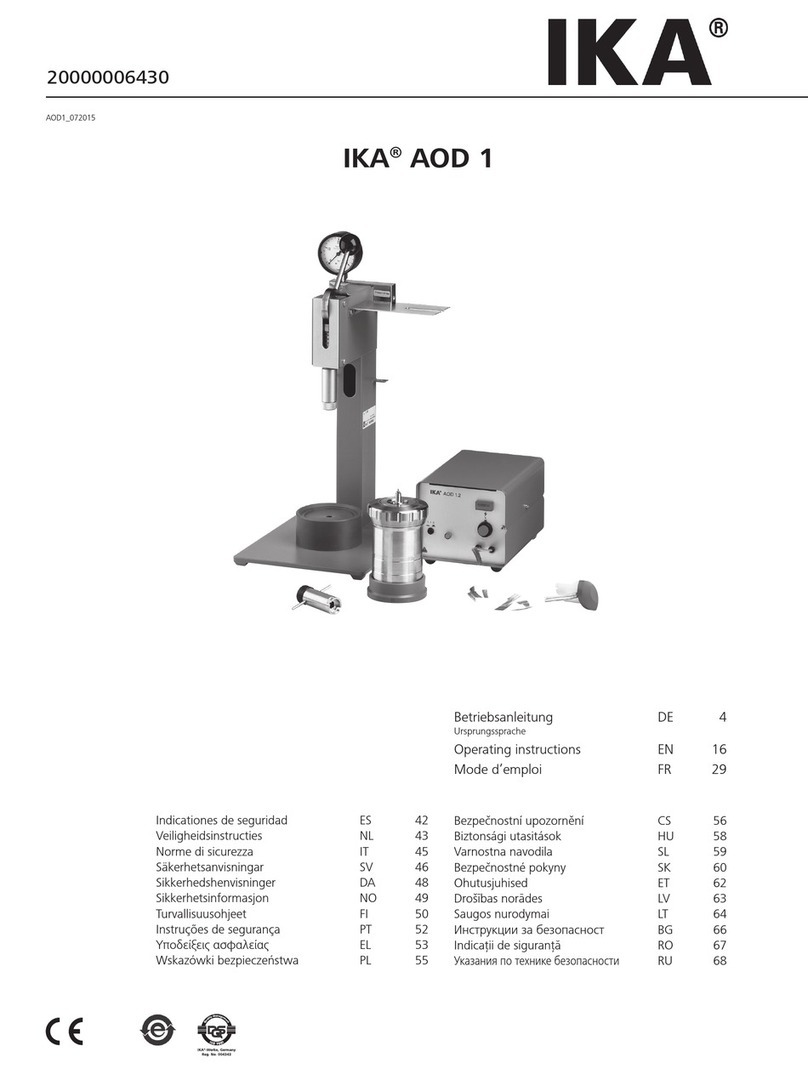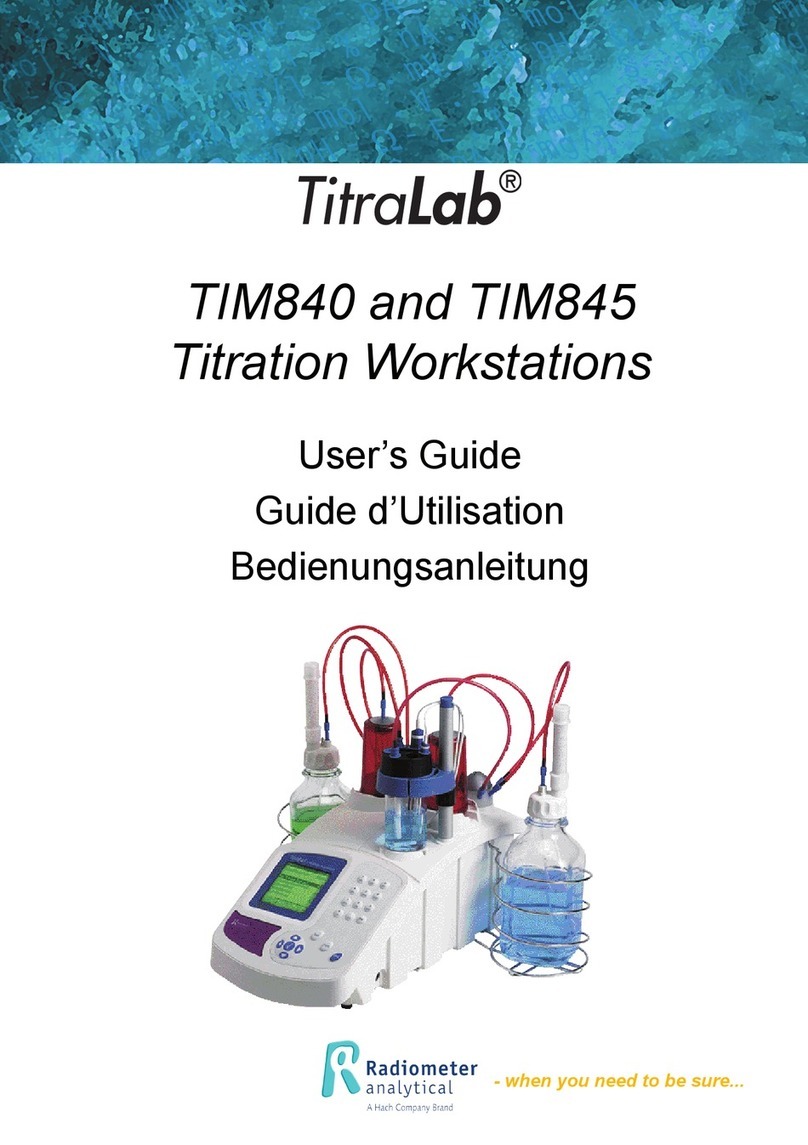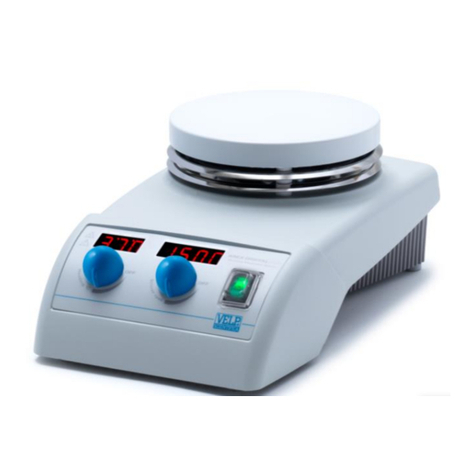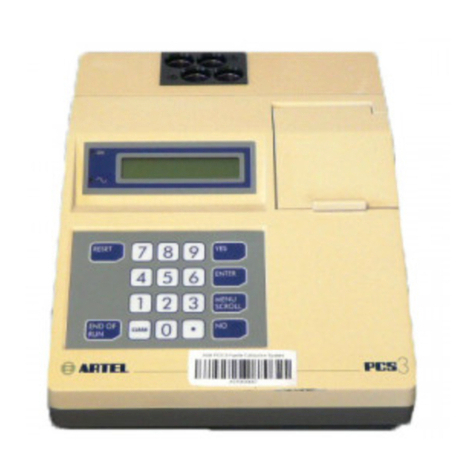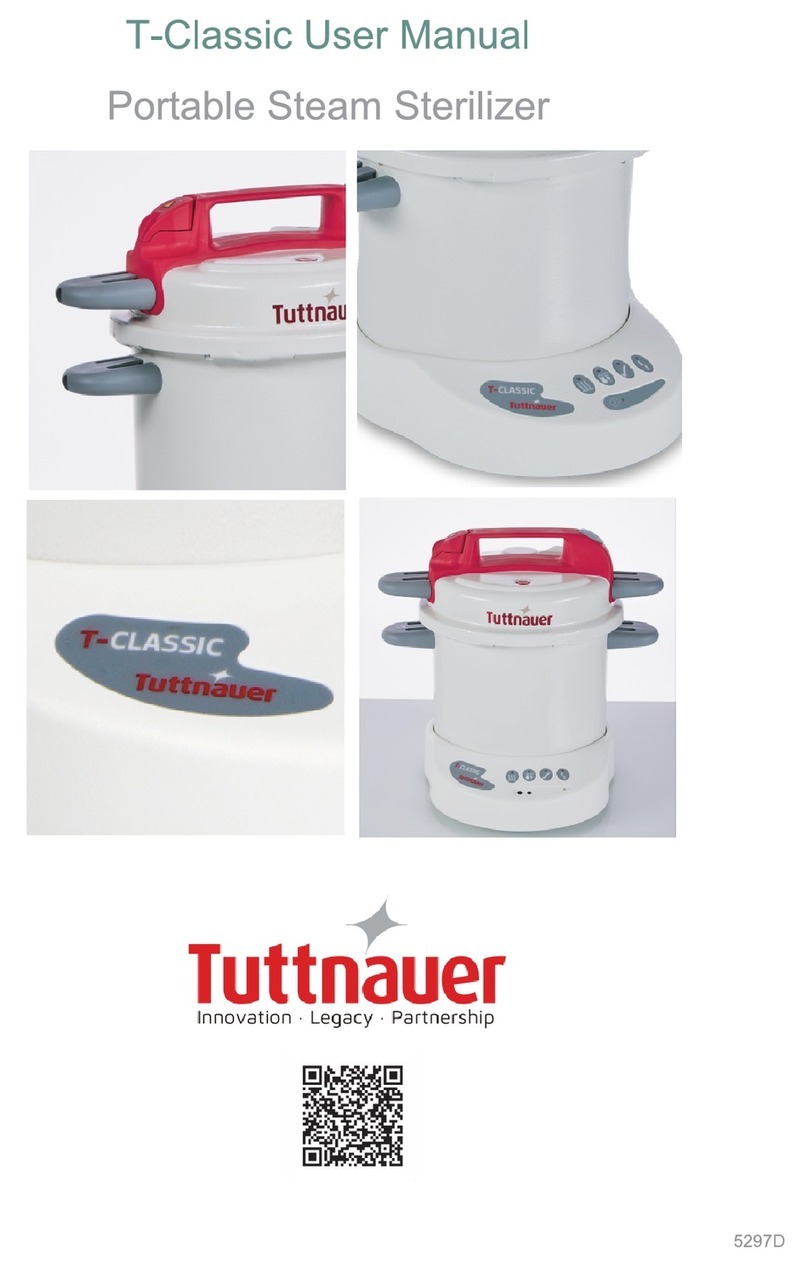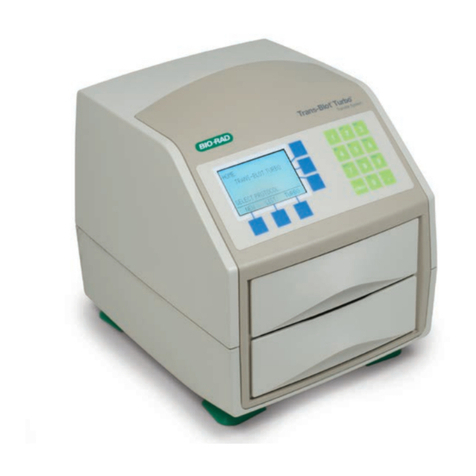
INGOS Ltd. RVO 400 Page 17
not running, even the pump mains cable is correctly plug in the rear of evaporator as well as vacuum
connecting hose. Check the vacuum pump fuse, possibly replace it with new one featuring the same
parameters (fig. 2, T3,15A).
6. SAFETY AND OPERATION CONDITIONS
6.1 Operation safety
Ensuring of rotation of the sample to be vaporized: Current protection of the driving
motor. If the
resistance against rotation has increased above the
prespecified limit, the driving motor voltage will be
disconnected. (This situation will be signaled by the
flashing of the rotation icon)
Protection of the heating bath lift: Friction coupling between the driving motor and
lifting equipment. In the case of an increase in resistance
during the lifting of the bath above the specified limit the
friction coupling could slip.
Protection of bath heating: Electronically by means of a thermal protection
Against overheating. There will not be any heating if the
incorporated sensor of the heating bath has been
connected or if the difference of temperatures between
sensors rises above the limit pre-specified by the
manufacturer. (This situation will be signaled by the
flashing of the icon for heating)
6.2 Operation conditions
The apparatus is designed for the work under ordinary laboratory conditions at temperatures of 10
to 30°C and air humidity up to 80% . The power supply is 230 V, 10 A, 50 Hz. The inlet cord should
be connected into a socket circuit featuring protection from 10 A or 16 A. The inlet cord cannot be in
contact with the heating bath. The socket designed for the connection of the heating bath is designed
exclusively for this bath. Oil used in the bath must be designed for a temperature of at least min.
200°C for temperature to 180°C (230°C for temperature to 210°C). The bath volume shall not exceed
2 l.
It is forbidden to handle any bath which has been heated to a temperature exceeding 40°C in any
other way than by using the apparatus lift. If you want to fill the liquid into the heating bath, always
switch the vaporized sample rotation OFF. For temperatures up to 100°C use water as the filling of the
heating bath (with regard to its higher thermal capacity).
During the evaporation of aggressive substance engage behind the cooler outlet bottle gas
wasching acc. to Drechsler.
Terms of service vacuum pump are in the user manual.
Caution! If you are replacing the round-bottom flask after the vaporized solution has become
thicker, pay particular attention and if it is not possible to remove the flask easily from the cone, carry
out any other handling only after the cooling of the bath.




















